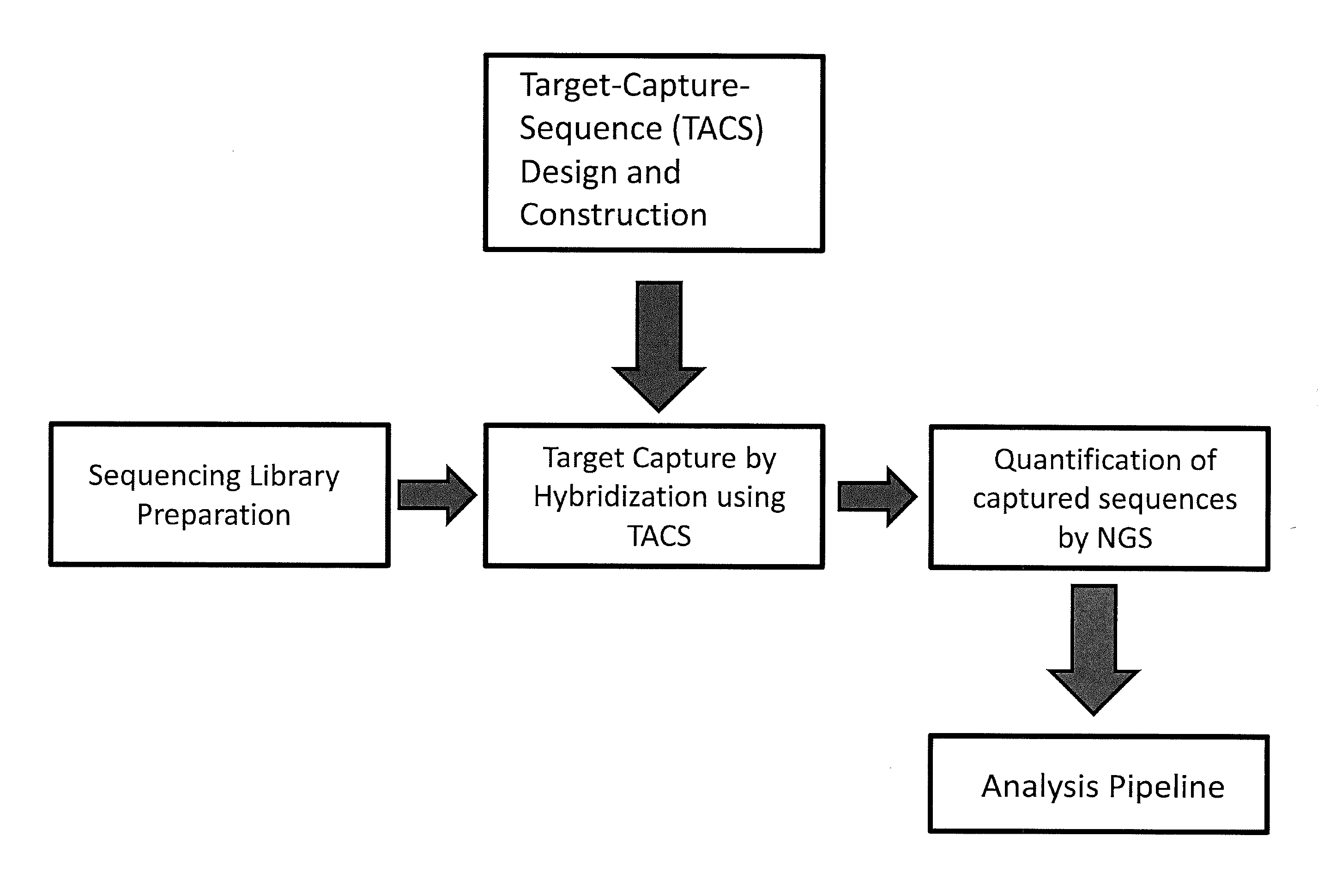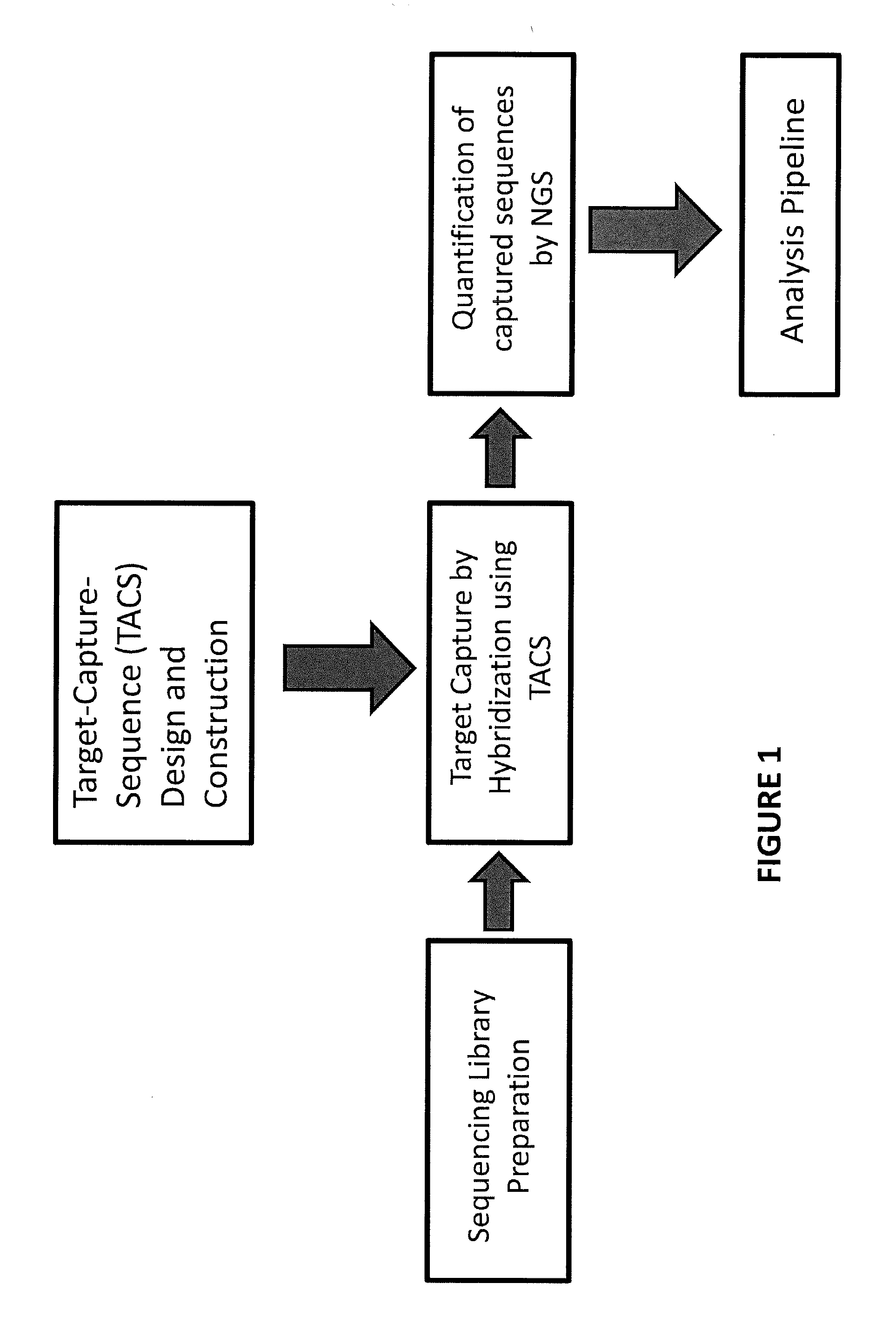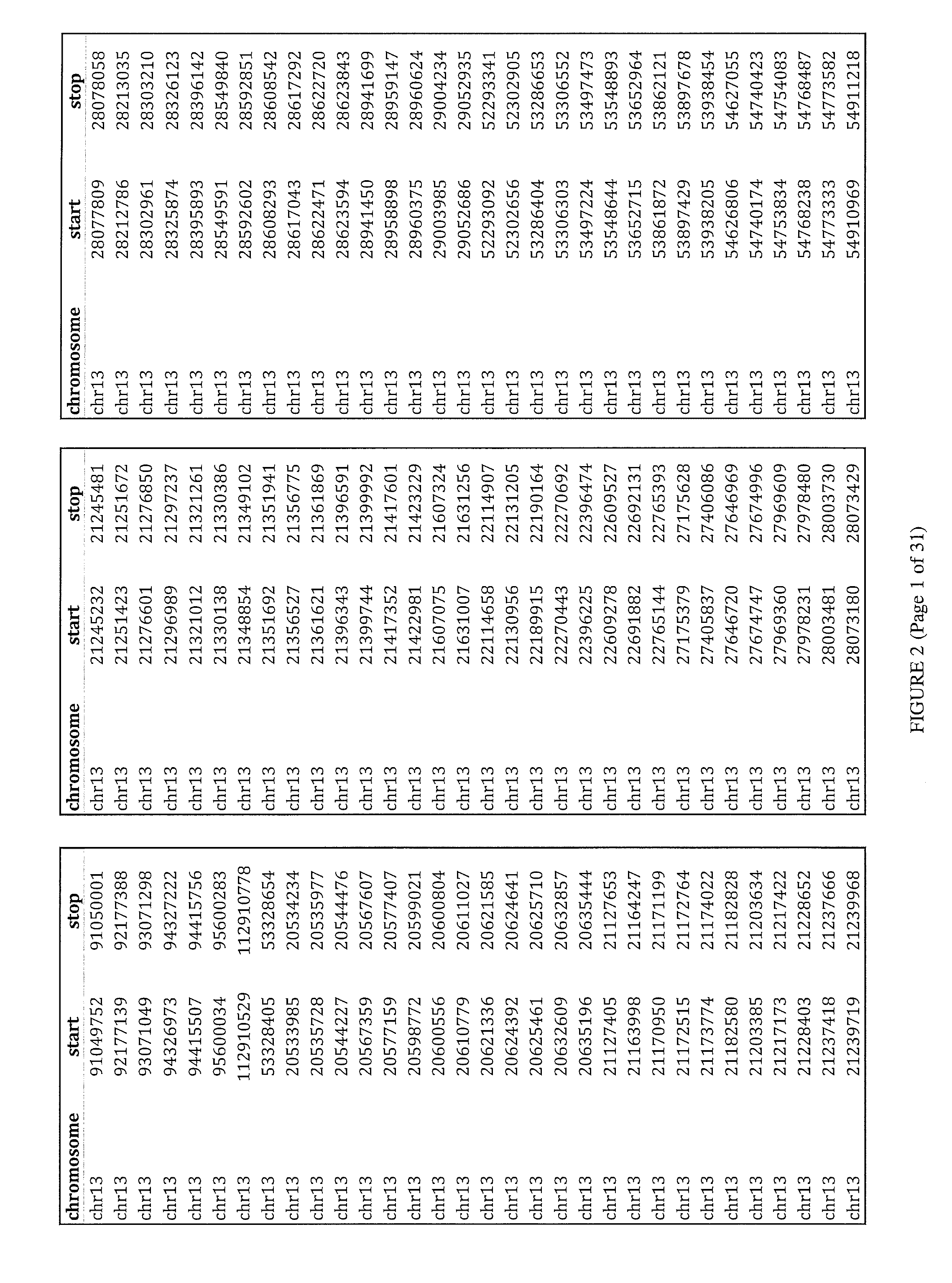Multiplexed parallel analysis of targeted genomic regions for non-invasive prenatal testing
a genomic region and multi-parameter technology, applied in the field of multi-parameter parallel analysis of targeted genomic regions for non-invasive prenatal testing, can solve the problems of complicating quantification, affecting so as to reduce the amount of sequencing, improve the accuracy of counting and assessment, and improve the accuracy of the analysis
- Summary
- Abstract
- Description
- Claims
- Application Information
AI Technical Summary
Benefits of technology
Problems solved by technology
Method used
Image
Examples
example 1
Sample Collection and Library Preparation
[0090]Plasma samples were obtained anonymously from pregnant women after the 10th week of gestation. Protocols used for collecting samples for our study were approved by the Cyprus National Bioethics Committee, and informed consent was obtained from all participants.
[0091]Cell Free DNA was extracted from 2-4 ml plasma from each individual using a manual or automated extraction method suitable for cell free DNA isolation such as for example, but not limited to, Qiasymphony protocol suitable for free fetal DNA isolation (Qiagen).
Library Preparation
[0092]Extracted DNA from maternal plasma samples was used for sequencing library construction. Standard library preparation methods were used with the following modifications (Meyer, M. and Kircher, M. (2010) Cold Spring Harb. Protoc. 2010(6):pdb prot5448). A negative control extraction library was prepared separately to monitor any contamination introduced during the...
example 2
TArget Capture Sequences (TACS) Design and Preparation
[0094]Custom TACS were prepared for the detection of whole or partial chromosomal abnormalities for chromosomes 13, 18, 21, X, Y or any other chromosome, as well as other genetic abnormalities, such as but not limited to, microdeletion / microduplication syndromes, translocations, inversions, insertions, and other point or small size mutations. The genomic target-loci used for TACS design were selected based on their GC content and their distance from repetitive elements (minimum 150 bp away). TACS size can be variable. In one embodiment of the method the TACS range from 100-260 bp in size and are generated through a PCR-based approach as described below. The TACS were prepared by simplex polymerase chain reaction using standard Taq polymerase, primers designed to amplify the target-loci, and normal DNA used as template. The chromosomal regions used to design primers to amplify suitable loci on chromosomes 13, 18, 21 and X, to ther...
example 3
TACS Hybridization and Amplification
TACS Biotinylation
[0096]TACS were prepared for hybridization, as previously described (Maricic, T. et al. (2010) PLoS One 5:e14004) with minor modifications, starting with blunt ending with the Quick Blunting Kit (NEB) and incubation at room temperature for 30 minutes. Reaction products were subsequently purified using the MinElute kit (Qiagen) and were ligated with a biotin adaptor using the Quick Ligation Kit (NEB) in a 40μl reaction at RT for 15 minutes. The reaction products were purified with the MinElute kit (Qiagen) and were denatured into single stranded DNA prior to immobilization on streptavidin coated magnetic beads (Invitrogen).
TACS Hybridization
[0097]Amplified libraries were mixed with blocking oligos (Maricic, T. supra) (200 μM), 5 μg of Cot-1 DNA (Invitrogen), 50 μg of Salmon Sperm DNA (Invitrogen), Agilent hybridization buffer 2×, Agilent blocking agent 10×, and were heated at 95° C. for 3 min to denature the DNA strands. Denaturat...
PUM
| Property | Measurement | Unit |
|---|---|---|
| length | aaaaa | aaaaa |
| read-depth | aaaaa | aaaaa |
| read-depths | aaaaa | aaaaa |
Abstract
Description
Claims
Application Information
 Login to View More
Login to View More - R&D
- Intellectual Property
- Life Sciences
- Materials
- Tech Scout
- Unparalleled Data Quality
- Higher Quality Content
- 60% Fewer Hallucinations
Browse by: Latest US Patents, China's latest patents, Technical Efficacy Thesaurus, Application Domain, Technology Topic, Popular Technical Reports.
© 2025 PatSnap. All rights reserved.Legal|Privacy policy|Modern Slavery Act Transparency Statement|Sitemap|About US| Contact US: help@patsnap.com



